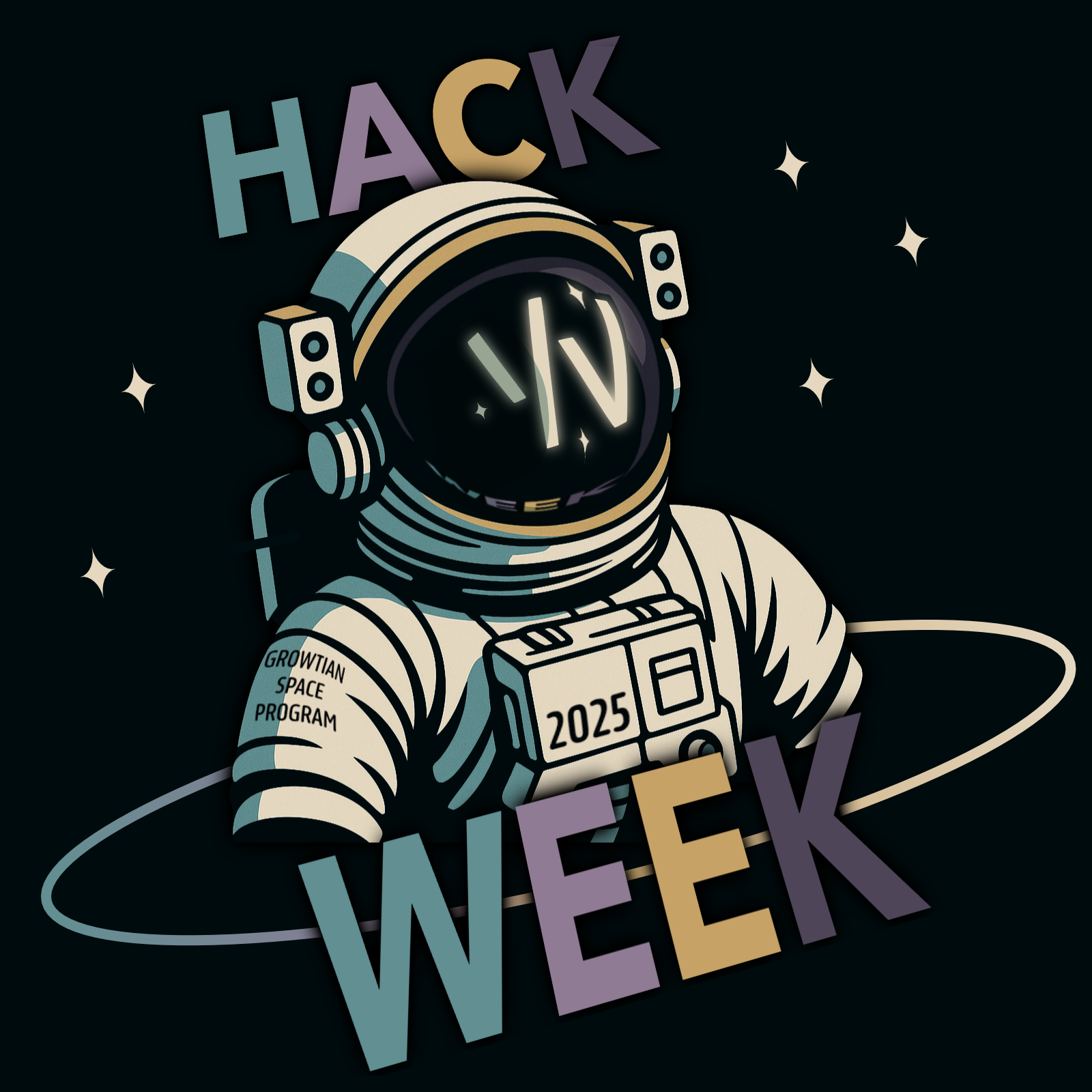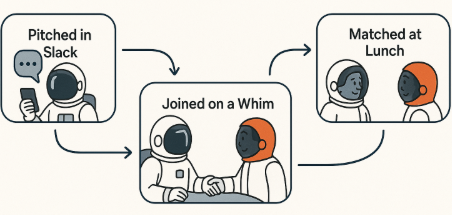
Last June, we hosted our biggest biggest hackathon at WHOOP yet, and our first one focused on using AI. The event was open to the entire company: product managers, designers, operations, scientists, engineers, marketing, and more. The results were beyond what I could have imagined.
This hackathon wasn’t just about building projects. It was also about empowering people to experiment, form new connections, and expand what we believe is possible when everyone is invited to build. Ultimately, if someone had a question whether they could do something, my answer would almost certainly be a resounding “Yes, go after it”.
Why We Did It
AI is already changing how we work, and we believe it can help us move faster, think differently, and better serve our members. Our mission is to Unlock Human Performance and Healthspan … and that includes ourselves.
Hack Week gave us a chance to put that belief into action. We wanted to:
- Make AI tools accessible to everyone, regardless of role or background.
- Encourage experimentation across teams, disciplines, and technical experience.
- Reinforce our culture of innovation, autonomy, and collaboration.
So, we turned our OKRs and company strategy into open-ended prompts and themes, including one inspired directly by our mission. Even the categories were refined using AI tools, staying true to the theme.
How We Put the Hackathon Together
We kept constraints minimal. Each team had two full days to hack. There was communication and setup that took some time, given that we wanted our people to think about what to hack at least a month in advance. A month before, I observed conversations where an idea could be part of the incoming hackathon.
Here's the full week schedule:
| Day | Date | Activity |
|---|---|---|
| Monday | June 23 | Lunch "Matchmaking" for Teams |
| Tuesday | June 24 | Hacking begins |
| Wednesday | June 25 | Full Hack Day |
| Thursday | June 26 | Science Fair Day (bring the heat) |
| Friday | June 27 | Top 10 Shark Tank Style Pitches and Winner Decided |

Everything else was open-ended by design. People formed teams however they wanted: some pitched early in Slack or recruited collaborators through a shared Google Sheet, others waited until pitch day or were matched by organizers. Some joined the day of because they didn’t want to miss out on the action.
Certain hack teams even needed hardware which takes time to order and procure. We funded a few of those ideas weeks in advance. Just a quick 10-second pitch, a $ number, and we were in. All asks were funded to go.
We saw cross-functional groups forming naturally; engineers teaming up with designers, the Support team pairing with data scientists, product folks jumping in with Replit or Cursor to try building too. There were no barriers; just curiosity.
Results: 72 Hacks in 48 Hours
Last hackathon, we had 23 projects. This year, we experienced 72! The reason for the explosion wasn’t because we grew dramatically in size. The difference was the accessibility of AI and the trust we placed in our people. This time, the mindset was different. People were excited to try new things, confident they’d be supported, and unafraid. That’s the vibe we wanted: zero judgment.
The surge of projects meant the planning team had to adjust in real time, so we stayed nimble and made adjustments minute by minute. I knew we couldn’t plan absolutely everything.
Even non-technical teammates shipped working prototypes. One team, with no engineering background, built a tool to improve how they support members. A product team launched a working web tool to help with WHOOP Coach prompt curation. No one waited to be invited; their energy led to positive outcomes.
As of right now, 4 projects have shipped to members or employees with many more in development. For example, we immediately shipped a new experience to help our members classify the activity they were doing that was not automatically scored.

In addition, we also immediately shipped a new iOS Lockscreen widget for Haptic Alarm. The alarm data was there and it only needed a visual interface to help our members know when the alarm will fire. Check out the second widget from the right in the below screenshot.

Competitive and Collaborative
Yes, there were prizes. But what stood out most was the generosity and shared energy across the event. Teams that finished early jumped in to help others. People moved between hack teams to offer feedback, ideas, or even code. Our culture of collaboration and dedication to the mission spoke for itself.
When the Top 10 were announced via popular vote, we had each of the team present at our Company all-hands as the main event. We were inspired by the Shark Tank style of pitching and each of the judges gave their ranking at the end to help determine the winner.
This kind of collaboration doesn’t happen by accident. It comes from years of fostering a culture where people feel ownership, trust, and excitement in their work.
What Shipped, What’s Changing to Improve
Unlike previous hackathons, projects didn’t end when time ran out. Many continued into follow-up demos, prototypes, and even live experiments. Some have already shipped internally and made their way to members.
We also learned a few lessons. Managing 70+ hacks from memory? Not sustainable. For our next hackathon, we're considering more structured documentation or a science-fair-style expo featuring assigned team booths. But we’ll do it without losing the creative freedom that made this event so electric.
Takeaways
If you're considering doing something similar at your company, here are a few takeaways that made this work:
- Give people space to explore AI tools, regardless of background.
- Make it fun. The energy that follows will power everything else.
- Don’t over-structure. A little chaos lets new ideas surface.
- Support people visibly. Trust, encouragement, and even a little angel investment go a long way.
We’re proud of what came out of Hack Week 2025 and even more proud of how we learned and built hacks together.